Review information
Time Played: 70 hours
Platform: Nintendo Switch
It was when the Welsh cat girl punched a mutant in the face, cutting their villainous monologue short and kicking off a spectacular mid-game boss battle, that I realized Xenoblade Chronicles 3 was my new favorite RPG.
I had my suspicions prior to that moment, though – when the story explored Taion’s background and presented him as a complex, interesting character instead of the stereotype usually applied to black people in video games, for example.
I wrote earlier this month that developer Monolith Soft’s Xenoblade Chronicles 3 is a leap forward in storytelling for the series, and spending more time with it only furthered my belief that this is one of the finest RPGs of the past few generations.
Xenoblade Chronicles 3 price and release date
- What is it? A massive JRPG with real-time combat and open, but interconnected regions
- Release date: July 29, 2022
- Price: $59.99 / £49.99 / AU$79.95
- What can I play it on? Nintendo Switch
The other side
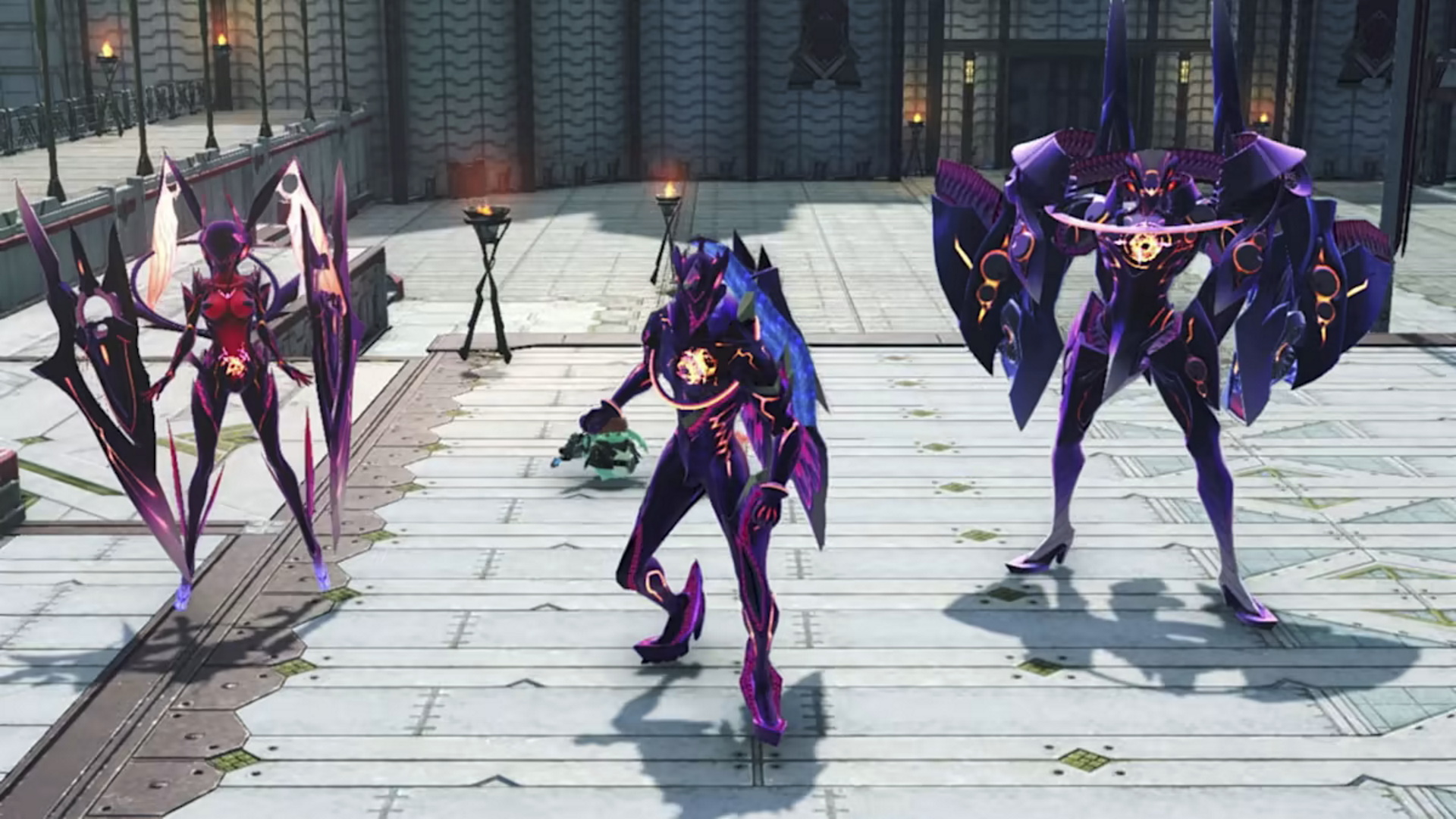
Shortly after the prologue’s opening war scene, a significant incident forces a squad of Kevesi soldiers and an Agnian special ops team to cooperate, after their respective nations brand them as traitors. Having your former friends want to kill you is bad, but on the bright side, the party gains the ability to fuse into mecha-monsters, which has an unexpected side effect. Joining body and mind gives the interlinked characters broken glimpses into their partner’s lives, their fears, sadnesses, and desires, and makes them wonder if perhaps the truths they were told about “the other side” weren’t so true after all.
At this point, I figured Xenoblade 3 would make empathy its primary theme, and I half expected it to go no deeper. The first two games are mostly happy to define themselves by one concept – freedom of choice, or the power of friendship – and explore it in a limited, sometimes hamfisted way, leaving the plot to pick up the slack.
I was pleasantly surprised to find that Xenoblade Chronicles 3 aimed to be much more than its predecessors.
I was pleasantly surprised, then, to find that Xenoblade Chronicles 3 aimed to be much more than its predecessors. It’s thematically ambitious in a way the first two games, and most other RPGs, aren’t – and manages to fulfill and even surpass those ambitions.
After the two squads join forces, the main goal for a long time is arriving at a distant place called Swordmarch, where a city supposedly thrives underneath a giant sword that looks like it fell right out of the first Xenoblade’s sky, tip first. The trouble is that this path takes the party past Keves Castle, ruled by a rather familiar-looking masked queen who’s bent on eliminating the band of rebels and anyone who aids them.
Rebellion plays a key part in the broader narrative, as your group, and eventually the colonies they liberate, push back against the cycle of war and death their rulers force them into. At its core, though, Xenoblade 3 is about grief, loss, and suffering.
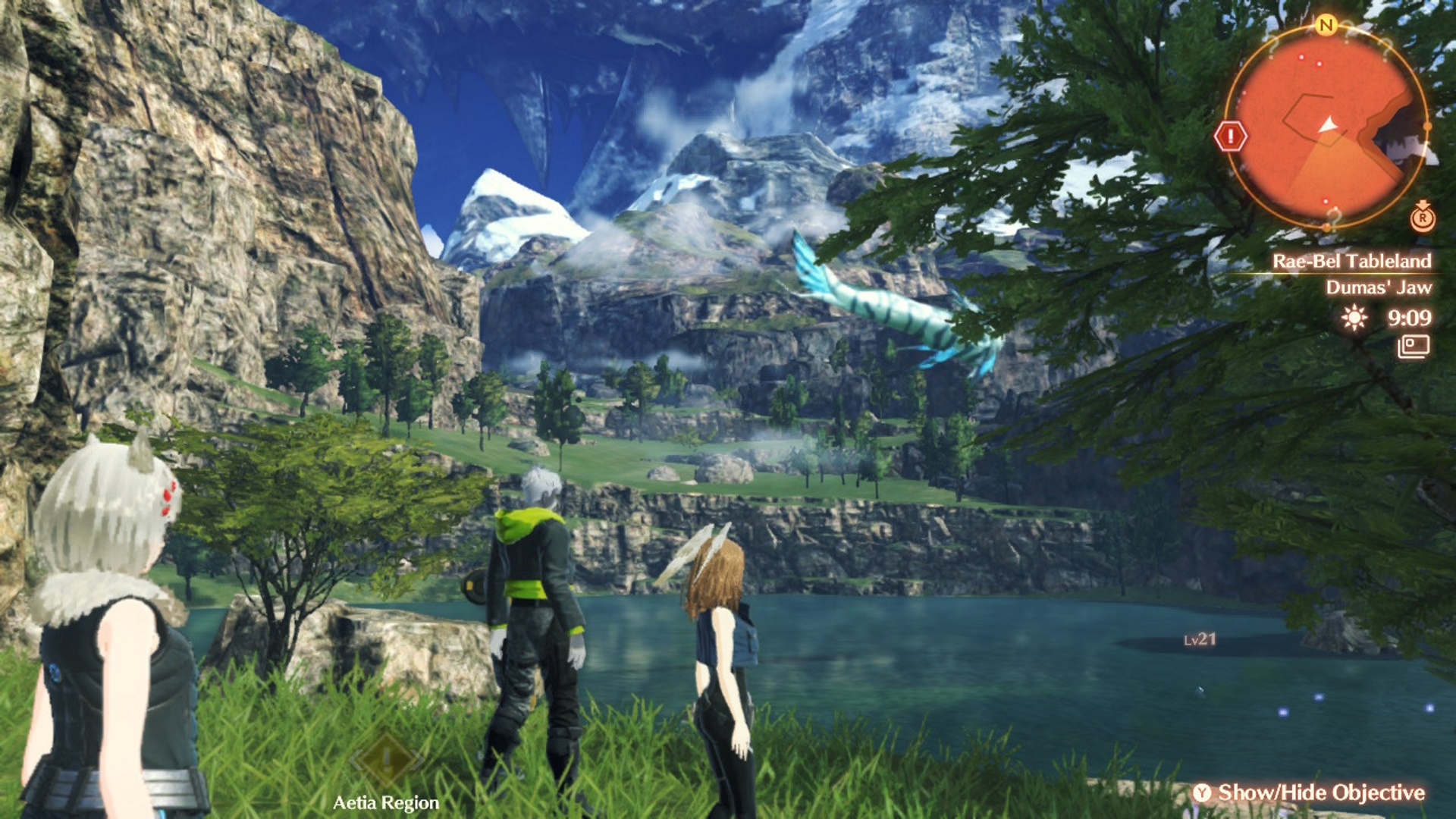
In the best case, Xenoblade’s soldiers only live for a decade – called a ‘term’. And so survivors struggle to make sense of their loss both in the wars, and once their friends’ allotted 10 years of life are up. They grapple with guilt, and the responsibility of ensuring they create a lasting legacy for those who came before, all while realizing that they may never fulfill even their own most basic dreams. There just isn’t enough time – and then they die.
Some of the most moving moments come when playable character Mio tries, often unsuccessfully, to reconcile herself to the fact that she has only three months to live. There’s seemingly no way to change her fate, no elysium to make everything better – only decline, absence, and the inevitable wondering what it was all for.
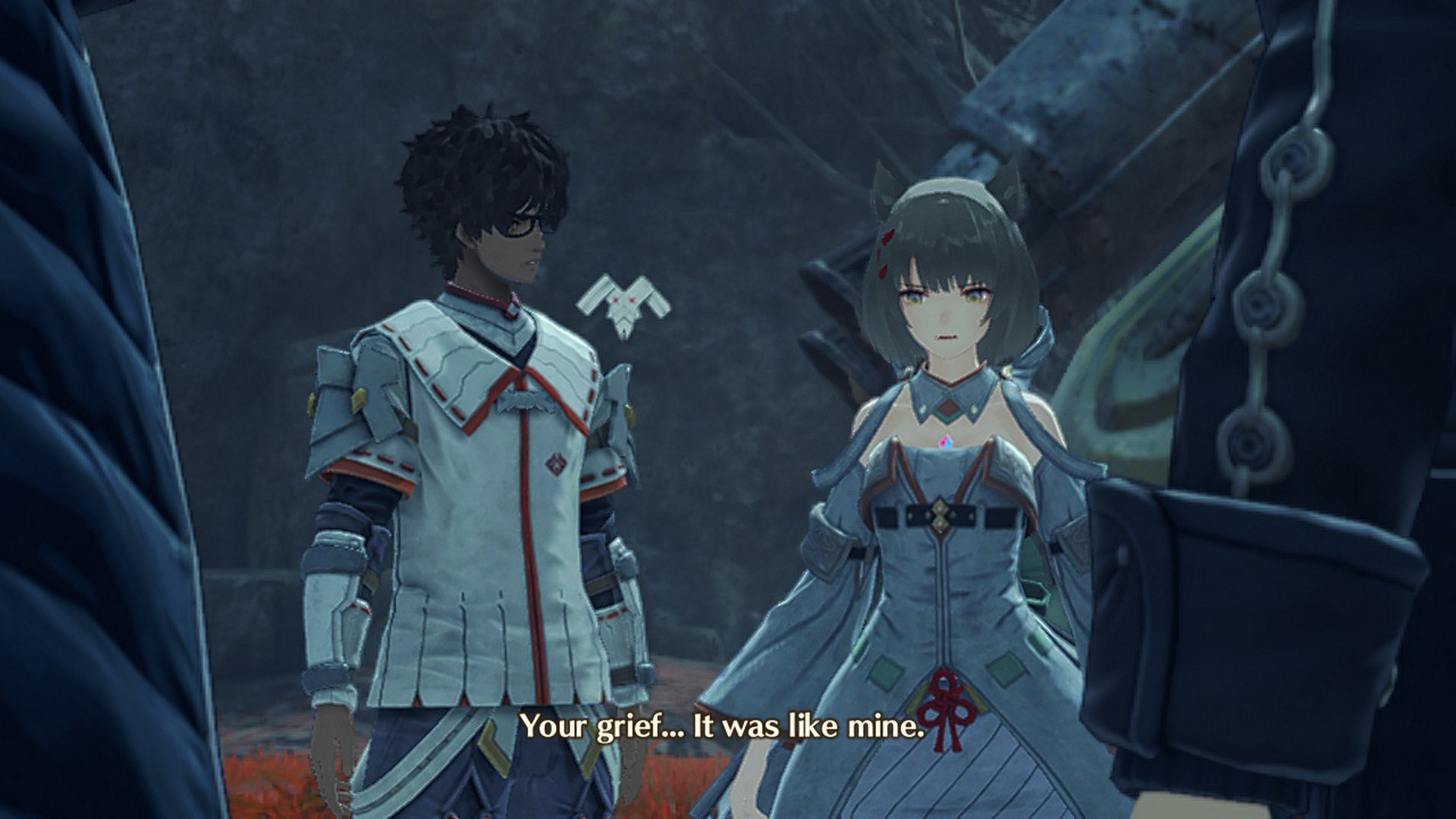
Before protagonists Noah and Mio broke free from this loop, the only way to channel their feelings was through fighting. And once Kevesi and Agnian alike gain their freedom, they’re all faced with the same question – what is the point of their existence?
Decay’d
Xenoblade 3 isn’t sad just for the sake of it. The point is to make sense of life through the grief and hardship, to create meaning and hope even when it seems like there is none. During one conversation roughly halfway through the story, Mio even straight up asks Aristotle’s classic question: what is the good life?
This could easily seem pretentious in another context, but coming as it does after musings about the practical function of spiritual beliefs, and speculations about past-life experiences, it seems completely natural. That’s just what Xenoblade 3 is.
The answer it suggests for its heavier questions is that there isn’t an answer. The only thing Noah and the rest can do is try to understand each other, offering help during their friends’ darkest struggles and working to build a better world for themselves and everyone else, despite having little idea what that world should look like.
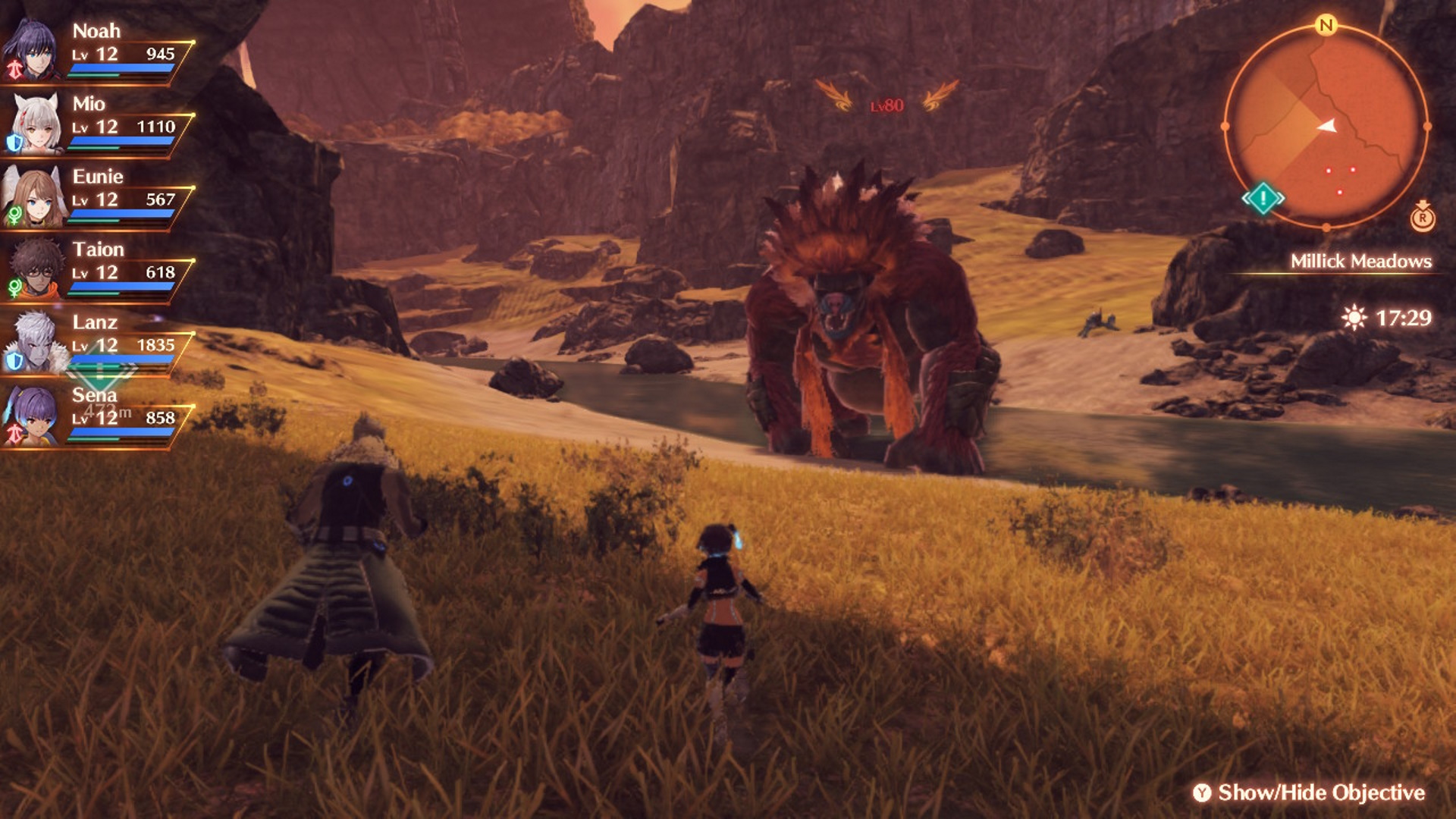
It’s a rare thing to find such a boldly ambiguous central theme in media. It’s even less common in video games, which are so often built to let players feel good through resolving problems.
Arts and crafts
Xenoblade 3 rises above its predecessors in combat as well. MMO-style fighting was already one of the series’ distinguishing features, with its skill cooldowns and ability hotbar, but Xenoblade 3 really makes something of that characteristic. While in Xenoblade 2 your Blade combinations determined the role best suited for your character, the third entry streamlines that system. Every class has an assigned role – attacker, healer, defender – with some unique functions not seen in the previous two games that change how you think about positioning and character synergy.
A class’ strongest ability is called a Talent Art, and the way they work is fascinating. You start a battle with zero charge in the Talent meter. It only fills as you complete role actions, but these aren’t as straightforward as you might imagine. A healer’s role action is placing status buff zones on the field. Healing doesn’t actually contribute to the meter, so if you want to use their Talent Art – and you usually do – you need to give some thought to which skills you equip, so you don’t end up dead.
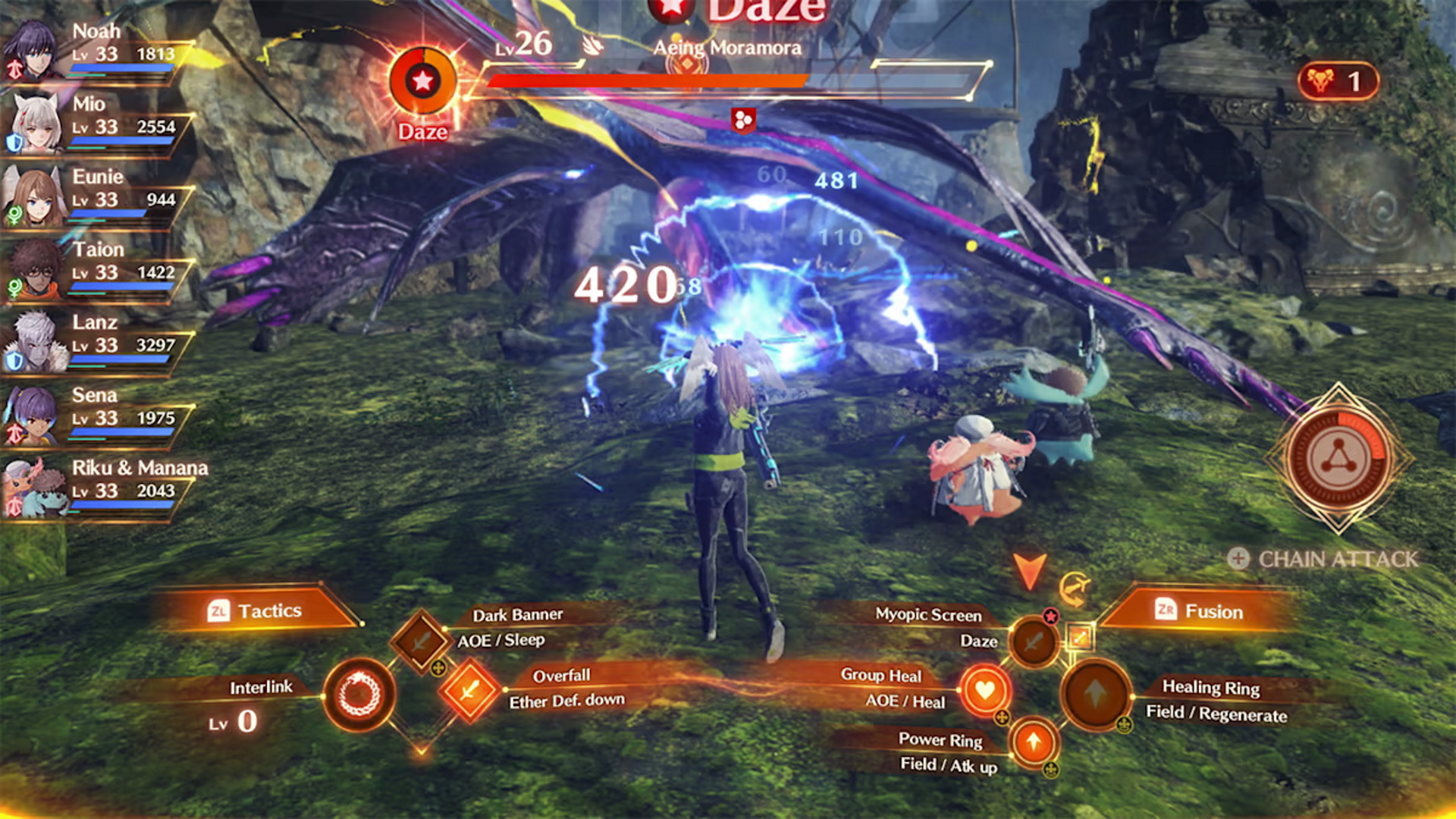
You probably will… end up dead. At least a few times. Xenoblade Chronicles 3 doesn’t hold back on challenge and will test your JRPG mettle. Though you have some measure of control over the difficulty, by inviting a Hero NPC to your party and using bonus experience points to raise the party’s level well beyond the standard for a given area means gives you an edge.
Class in session
The class system is where Xenoblade 3’s combat really shines, though it takes a few chapters before its value becomes apparent. Every party member can equip any class, and learn a few of its key skills as you rank up. The tutorial suggests Fusion Arts are the biggest benefit here, allowing you to use two charged skills at once, and set up some powerful combos in the process.
The major draw for me, though, is how flexible this system makes character customization. If you want to stack your defender with evasion and high-aggro skills, that’s completely viable. Thanks to equippable, stat-boosting gems and accessories, you can also give them healing skills to pop off in a pinch, or debuffs to make the fight go faster. There’s just so much to experiment with. Even though the skill charge time and auto attacks in between are a little slower than I might have preferred, this is easily one of the most enjoyable and satisfying combat systems in recent years.
A few ideas and mechanics feel rather superfluous and underdeveloped.
Monolith has filled Xenoblade 3 with ideas and mechanics, and even though most of them work very well, a few feel rather superfluous and underdeveloped. Manana, one of your adorable Nopon companions, can cook several types of meals when you rest at camp, though none of them seem necessary, except perhaps on Hard mode. The random encounter system seems a bit pointless as well, since it has no effect on anything.
There’s also a rather clunky overhearing system, where you can catch pieces of conversation in the colonies, then go back to a campsite and discuss what you heard to unlock a new quest or an extra bit of world building. It’s a clever concept, but having to navigate back to a campsite just to process the information is a bit tedious.
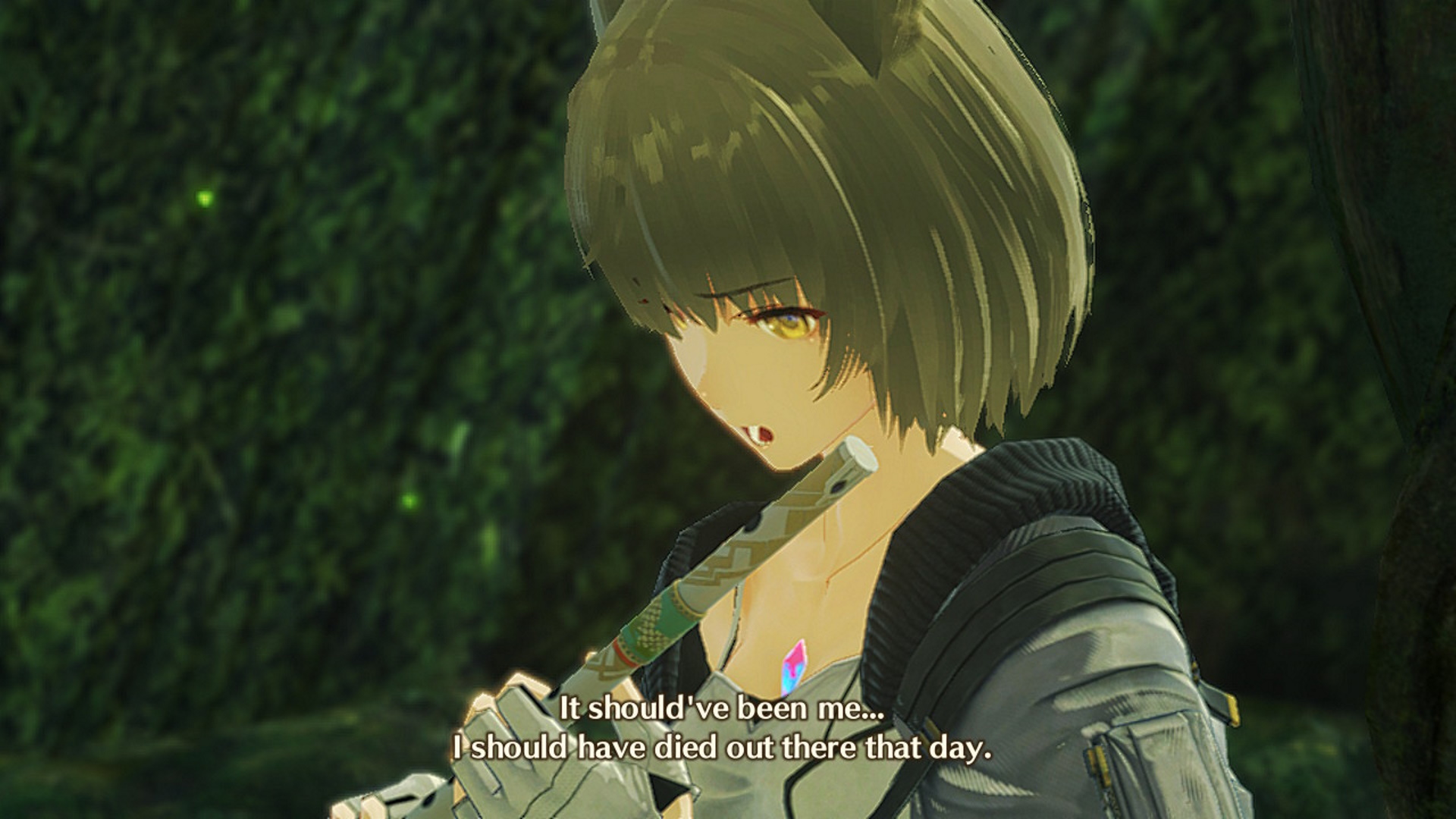
These issues stand out mostly because everything else blends so well, and aren’t really worth dwelling on. Xenoblade Chronicles 3 is a beautiful story, skillfully told, with a combat system that finally delivers on the promise of innovation the original game made over a decade – more than a lifetime – ago.
RPGs so often profess to revolve around finding light in the darkness, but few actually manage to explore the darkest and most vulnerable parts of the human experience in a relatable, worthwhile way. To its great credit, Xenoblade Chronicles 3 does.




